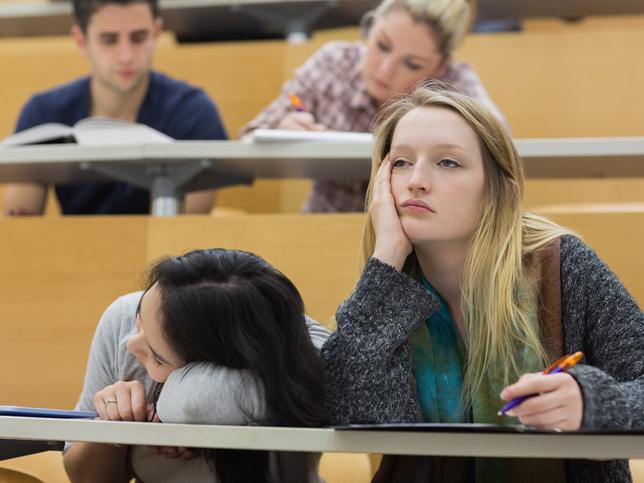
Make social-emotional learning part of teaching: it’s easier than you think
These practical, achievable tips show how to incorporate social-emotional learning into everyday educational practices
Well-being in relation to learning is an idea on the tip of everyone’s tongue. Well-being describes how someone feels about themselves and their life when they are in a state of balance and have the resources to deal with life’s challenges. Social-emotional learning (SEL) is the driver of well-being development to achieve this state of balance.
Drawing on our understanding of the role of emotions and social connection in effective learning, we show that SEL can be successfully embedded into the higher education learning context to produce well-being and academic benefits for students.
In this, the final of three articles about how emotions can promote greater student engagement and learning, we explore strategies that explicitly embed SEL into everyday learning.
Social-emotional learning is vital in higher education
For students, SEL refers to the attainment and application of knowledge, skills and attitudes in relation to their emotional and social world. It involves developing a sense of identity, emotion regulation, goal-setting, empathy, positive relationships and decision-making – skills that also contribute to academic achievement.
- Collection: A framework for learning in seven principles
- What can your university do to combat student loneliness?
- Are your first-year students disengaging? Here’s how to get them back on board
For many students, the higher education experience includes relocating (locally, nationally or internationally), which introduces them to new social and academic customs, practices and experiences. Likewise, it means navigating new social and interpersonal interactions and networks, be they face to face or online, as well as complex subject matter and an expectation that students manage their own learning. They must also balance external personal demands and responsibilities.
All this means that SEL is a vital tool to support tertiary education.
What can everyday SEL look like?
It might feel that it’s just too hard to weave SEL into everyday teaching practice, but often teachers incorporate it without even realising it. Day-to-day SEL practices can be simple and brief yet add so much to learning. Some tips include:
- Plan learning with SEL in mind. Stop seeing SEL as an “add-on”. Keep SEL practices at the fore and incorporate them from the start rather than trying to retrospectively fit them into lessons, activities and student work. Build in time to reinforce SEL principles, such as 10 seconds to stretch or take a calm breath, which can ultimately enhance the lesson you teach through greater focus and engagement.
- Start the lesson with a readiness-for-learning check-in. A check-in – such as a virtual poll or priming questions regarding recall, challenges and successes – supports self-awareness in students, and provides a space of calm and reflection before launching into learning. It also gives educators an understanding of where students are at and which stage to enter in with teaching. Check-ins can reflect and track progress in emotions.
- Outline shared goals. Outlining clear goals and expectations from the start and using reminders throughout the course can foster a sense of security, which can support positive learning practices. Goals could emphasise self-management and pro-social problem-solving.
- Acknowledge emotions. Emotions are integral to, and intertwined with, all aspects of learning and teaching. Openly talk about emotions with students, and acknowledge when things are stressful or if content is engaging. This normalises feelings and leads to greater bonds and investment in learning.
- Connectedness is key. Building connections during classes can foster a sense of belonging and enhance empathy and learning processes. Cooperative behaviour has been found to achieve greater activation in regions of the brain associated with reward-based learning, which reinforces such behaviour and enhances engagement. Connectedness is also important for educators, being identified as a key protective factor for educators against stress.
- Be genuine and engaging in your instruction. How we teach is as instructive as what we teach. Just as the culture of the classroom must reflect social belonging and emotional safety, so can teaching embody and enhance these competencies. Experiences such as role-playing, gamification, interactive discussions and real-life problem-solving in the classroom can enhance learning. Sharing a genuineness and sense of enjoyment in what is being taught is contagious, and students will become authentically invested.
- Prioritise regular dialogic student feedback. Student voice and agency contribute to a positive learning environment and a sense of self-management in education. Clearly articulate learning and assessment goals, and revisit these frequently. Establish learning environments where students recognise that challenge is important for deep learning and feel safe to ask and answer questions to clarify understanding and check in on progress.
- Prioritise yourself as an educator. Teacher well-being contributes significantly to positive learning and well-being, with teacher burnout potentially predictive of student academic outcomes. Small self-care practices such as mindfulness, regular exercise, setting boundaries and taking up hobbies outside work will only enhance what you do in the classroom.
Positive lifelong development is founded on a balance of cognitive, social and emotional skills, which form the cornerstone of success in relationships, work and life in general. SEL benefits educators and students alike and can be easily embedded in day-to-day practices. Prioritising yourself, being open about emotions in learning, taking in student feedback and emphasising connectedness are just a small sample of the wide array of options you can use to enhance learning through SEL.
Annemaree Carroll is head of the Science of Learning Research Centre Learning Lab; Sasha Lynn is a research fellow in the Learning Lab; Alexandra Osika is a research assistant in the Learning Lab working in higher education, all at the University of Queensland. The Science of Learning Research Centre Learning Lab at the School of Education at the University of Queensland brings together multidisciplinary researchers and interprofessional partners with the aim of transforming learning across the lifespan.
If you found this interesting and want advice and insight from academics and university staff delivered directly to your inbox each week, sign up for the THE Campus newsletter.




